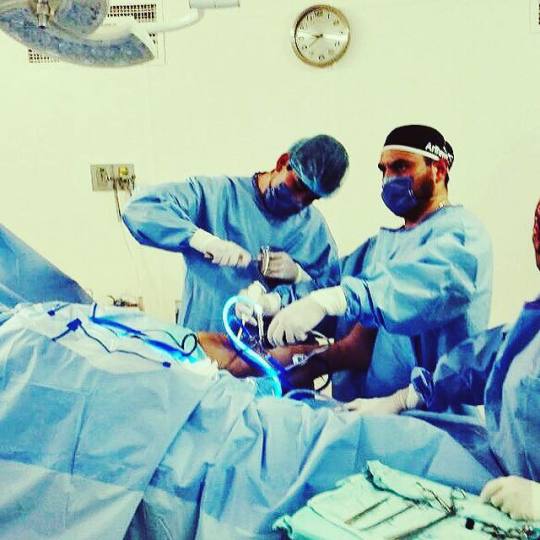| |||||||||||
lunes, 17 de abril de 2017
Libro sobre cefalea / Book on headache
Vía aérea, posición lateral y ML / Airway; Lateral position; Proseal laryngeal mask
| ||||||||||
domingo, 16 de abril de 2017
Facitis plantar refractaria en runner (corredor)
http://www.clinicadeartroscopia.com.mx/uncategorized/facitis-plantar-refractaria-en-runner-corredor/
Me toco ser el médico de segunda opinión de un Runner (corredor) con fascitis plantar refractaria incluso con faciotomia parcial percutanea MIS, pensé en una Neuritis de Baxter’s, realice hidrodiseccion guiada por ultrasonido y paciente corre nuevamente 10 K este próximo fin de semana
Facitis plantar refractaria en runner (corredor) »

sábado, 15 de abril de 2017
Efecto de los esteroides perioperatorios en la disfagia después de la cirugía de la columna cervical anterior: Una revisión sistemática
Effect of perioperative steroids on dysphagia after anterior cervical spine surgery: A systematic review
Fuente
Este artículo es originalmente publicado en:
Este artículo es originalmente publicado en:
De:
Ahmad FU1.
2017 Mar 6;11:9. doi: 10.14444/4009. eCollection 2017
Todos los derechos reservados para:
© 2017 ISASS – This manuscript is generously published free of charge by ISASS, the International Society for the Advancement of Spine Surgery
Abstract
BACKGROUND:
Dysphagia following anterior cervical spine surgery is common. Steroids potentially reduce post-operative inflammation that leads to dysphagia; however, the efficacy, optimal dose and route of steroid administration have not been fully elucidated.
OBJECTIVE:
The purpose of this systematic review is to evaluate the effect of peri-operative steroids on the incidence and severity of dysphagia following anterior cervical spine surgery.
CONCLUSIONS AND CLINICAL RELEVANCE:
Steroids may reduce dysphagia after anterior cervical spinal procedures in the early post-operative period without increasing complications. This may be especially beneficial in patients undergoing multilevel procedures. Future studies should further define the optimal dose and route of steroid administration, and the specific contraindications for use.
KEYWORDS:
anterior cervical spine; dysphagia; steroids
Resumen
ANTECEDENTES:
La disfagia después de la cirugía cervical anterior es común. Los esteroides potencialmente reducen la inflamación postoperatoria que conduce a la disfagia; Sin embargo, la eficacia, la dosis óptima y la vía de administración de esteroides no se han elucidado completamente.
OBJETIVO:
El propósito de esta revisión sistemática es evaluar el efecto de los esteroides perioperatorios sobre la incidencia y severidad de la disfagia después de la cirugía cervical anterior.
CONCLUSIONES Y RELEVANCIA CLÍNICA:
Los esteroides pueden reducir la disfagia después de los procedimientos espinales cervicales anteriores en el período postoperatorio temprano sin aumentar las complicaciones. Esto puede ser especialmente beneficioso en pacientes sometidos a procedimientos multinivel. Los estudios futuros deben definir aún más la dosis óptima y la vía de administración de esteroides, y las contraindicaciones específicas para su uso.
PALABRAS CLAVE:
Columna cervical anterior; Disfagia; Esteroides
PMID: 28377867 PMCID:
DOI:
Suscribirse a:
Entradas (Atom)

